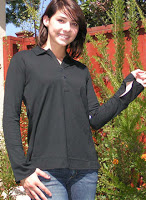One thing I’ve mentioned often is that it’s just as important for clothing to be free of harsh chemical finishing agents as it is for the base agricultural material to be organically grown. Many people who are chemically sensitive have reactions to the chemicals that are put on the fabric last because those chemicals often have the strongest residue on the final product.
So I have some knowledge of finishing agents, and I figure a little research on my part will help out my customers who may want to know more about what’s in conventional clothing and what to avoid. I knew some basics about common carcinogens such as formaldehyde, which is used to make fabrics wrinkle-resistant and Polybrominated diphenylethers (PBDEs), which are used as flame-retardants. But with a little research, I learned that I had barely touched the surface of the chemical finishing agent pool. According to the textbook Chemical Finishing of Textiles, there are thousands (!) of chemical finishing agents.

After a very short bought of reading up on chemicals such as fluorocarbons, silicons, acids and chlorines, I started to get depressed, and I particularly didn’t want to look up each of them in OSHA’s database. Then I remembered that part of the reason I named my business Faerie’s Dance was because I wanted to approach environmentalism with a sense of joy and beauty rather than gloom and doom about toxic chemicals. (And I almost didn’t publish this post.)
So this is my final (somewhat limited) word on chemical finishing agents. They’re mostly not environmentally friendly or people friendly and I avoid purchasing items made with them for our online store.
Next time – something more fun! 🙂






